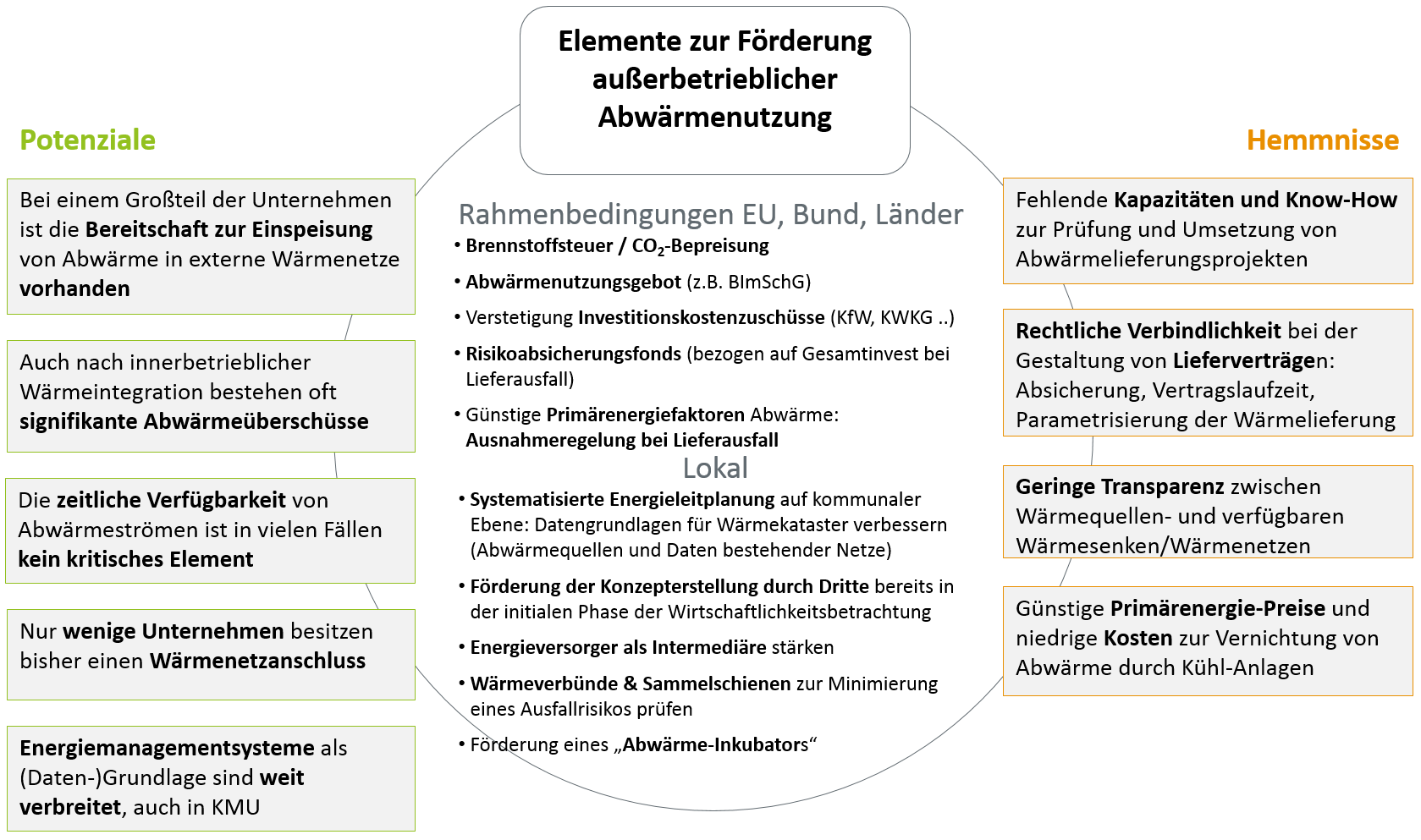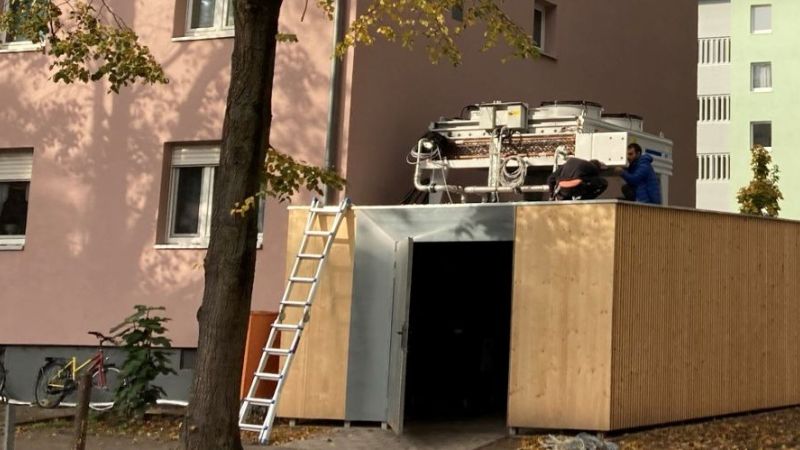 © Fotolia / industrieblick
© Fotolia / industrieblick
Waste heat register
Determining the potential of industrial waste heat in heating networks
In the NENIA project, the waste heat produced by all industrial sites in Germany is being systematically recorded for the first time. At the same time, a heat demand atlas is being created that shows the heat demand of the German residential and non-residential building stock, categorised according to energy use. By comparing these two registers, the potential of industrial waste heat that can be fed into heating networks and used to supply buildings and neighbourhoods can be determined. This information is documented in a so-called waste heat register.
Using industrial waste heat for the heating supply of buildings and neighbourhoods is an important building block of the energy transition in the heating sector. In most cases, industry itself cannot use the heat produced, or can only use it to a very limited extent. If the waste heat is instead fed into the heating networks for buildings and districts, the demand for primary energy can be significantly reduced there. So far, however, there are no reliable figures that could be used to assess the potential of this external use in heating networks. The waste heat register, which is being developed as part of the NENIA project, should now make such an assessment possible. Theoretically available waste heat potential will be evaluated according to technical and economic criteria, and the realistically realisable potential will be determined. The register will also be supplemented with findings from comprehensive practical surveys and case studies. On this basis, and with the involvement of stakeholders from industry and the district heating sector, recommendations for further waste heat utilisation projects can be derived.

Focus
The aim of the NENIA project is to develop a nationwide model that enables a realistic and quantitative assessment, based on technical and economic criteria, of the use of industrial waste heat in heating networks.
The theoretically available waste heat potential is determined primarily from site-specific data from emission declarations (in accordance with the eleventh regulation for the implementation of the Federal Immission Control Act). The data is processed, checked for plausibility and enriched using other data sources such as the European Pollutant Release and Transfer Register (E-PRTR). The assessment of this theoretically available potential according to technical and economic criteria is carried out on the basis of a heat demand atlas and a heating network potential model that is built upon it. The heat demand atlas has a high spatial resolution, is based on three-dimensional building models from the state land surveying offices, covers the entire German residential and non-residential building stock and is linked to renovation scenarios from the GEMOD building model of the Institute for Energy and Environmental Research (ifeu) in Heidelberg.

Milestones and achievements
A comprehensive geo-database of around 4,000 industrial sites has been created. It contains specific information on energy inputs and the resulting theoretically usable quantities of waste heat, categorised according to temperature, humidity, pollutant levels and temporal availability.
Furthermore, a nationwide heat demand atlas was created that documents the entire residential and non-residential building stock. The heat demand atlas, which has a high spatial resolution, can be used to map energy-efficient renovation scenarios and identify heat sinks (heating networks) that are available in the long term.

Heating network supply areas were localised in a newly developed nationwide heating network model. The model includes existing district heating areas and potential additional supply areas, whose technical and economic feasibility is mapped via a line density [MWh/m*a] at the level of a 500m analysis grid. Assuming moderate energy-efficient renovations in the coming years, the heating network model calculated a heating turnover of 64 TWh in existing heating network areas and a further 130 TWh in potential heating network areas for the year 2030. This modelling forms the basis for an analysis of the potential for grid-connected waste heat utilisation.
The waste heat register was derived from the database of theoretical waste heat potentials and the developed heat demand atlas and heating network model. If only existing heating networks are considered in the register and network operating temperatures in the status quo as well as reference costs of 120 EUR/MWh are assumed, about one fifth of the theoretically available potential can be used technically and economically nationwide (10 TWhth per year). If additional areas with potential for heating networks are taken into account, a further 11 TWh of waste heat can be tapped for the heating supply of buildings in a technically and economically feasible way.


As part of the practical surveys, around 600 industrial companies were contacted and on-site surveys were carried out at six companies. Utilisation concepts for the available quantities of waste heat were developed and questionnaires on grid-connected waste heat potentials were evaluated. These practical surveys show that in many companies, externally usable quantities of waste heat are available and that in 80% of the companies surveyed, these can also be economically developed.
Application
The Heat Demand Atlas, which covers 19.4 million heated residential buildings and 3.1 million heated non-residential buildings, is based on data that is subject to a fee. The project partners – the Institute for Energy and Environmental Research Heidelberg, GEF Ingenieur AG and Geomer GmbH – have developed a licence and usage agreement for cross-project use and data provision. Third parties can license the heat demand atlas from Geomer GmbH for any area within the borders of the Federal Republic of Germany. This makes it possible, among other things, to answer questions of municipal heating planning or the creation of heating supply concepts with a high-resolution spatial database at the level of individual georeferenced buildings.
In connection with the waste heat register, source-sink analyses can be carried out at municipal or regional level, for example, as well as analyses for energy master planning, transformation strategies and potential studies. The data sets on the theoretical waste heat potentials at 4,000 industrial sites were offered to the responsible state authorities. Publication as a waste heat register is to be examined by the federal states.












